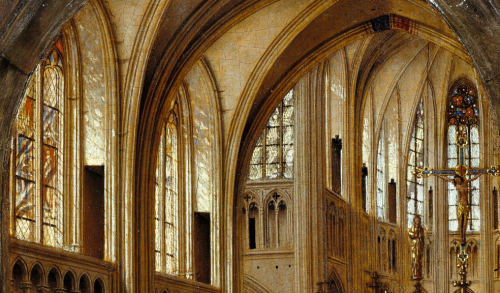#jan van eyck
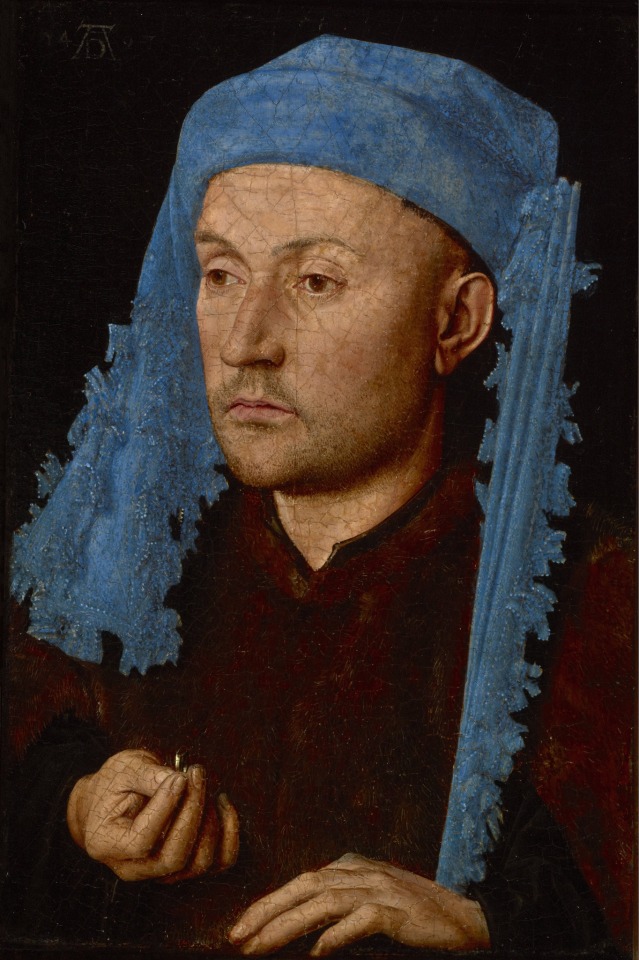
The man with the blue hat / The man with the ring
Art by Jan van Eyck
.c. 1430
Madonna from the Ghent Altarpiece by Jan van Eyck, 1432.
Madonna vomGenter Altar von Jan van Eyck, 1432.
Post link
Jan van Eyck (Maaseik, 1390 ca – Bruges, 1441)
Ritratto dei coniugi Arnolfini
1434, Londra, National Gallery
olio tu tavola, cm 81,80 x 59,40
-
Gli Arnorfini ereno in pratica immigrati italiani in Bergio, ma de quelli ricchi abbastanza da fasse fà er ritratto da Van Eyck. E se fanno raffigurà popo ner momento der matrimonio, tipo foto copertina arbum de nozze. E a vedè ‘a panza de lei te viè er dubbio che fosse un matrimonio riparatore: ma forse è solo come a dì “spicciamose a fà fiji e famoli tanti, belli e sani”, oppure na specie de scongiuro scaramantico tipo “ajo fravajo fattura che nun quaja, Dio dacce un pupo che er socero baccaja”.
Comunque è un quadro che pare quasi un rebbuse daa Settimana Enigmistica, e si te piaceno quii firm mezzi de paura mezzi de giallo e de mistero, te piacerà puro sto quadro, Annamo a vede che ce sta.
Tutt’intorno aa coppia felice anfatti ce sò un sacco de robbe che sò puro simboli, tipo er cane che vor dì federtà, o l’arance daa salute che sò come ‘a mela der peccato originale e quinni inviteno a nun fà robbe sbajate: sesso sì ma solo drento er matrimonio, me riccomanno. Pe tera ce sò ‘e ciavatte che quinni se ‘e sò levate, dici bè stanno a casa loro fanno come je pare, ma no, vor dì che è un momento solenne che quasi quasi er pavimento stesso è diventato sacro, come i musurmani che entranno in moschea pe rispetto se leveno ‘e scarpe. Sur lampadario ce sta na candela sola, che tu dici “ammazza tanto ricchi ma puro tanto spilorci”, ma no, ‘a candela è er simbolo der matrimonio e daa devozione, come a vorte nell’Annunciazione ce sta na candela: vergine madre, fiji e castità a ‘o stesso tempo, che è quasi più difficile de camminà scarzi senza sfragnese i piedi, appunto. E poi c’è er simbolo daa verga appesa ar muro, che, dice, pe assonanza vor dì verginità ma pure er bastone der marito che, speriamo solo simbolicamente, colpisce ‘a sposa pe ricordaje chi porta i pantaloni. Ma io sta candela e sta verga nun posso nun pensà che vonno dì puro n’antra cosa che nun nomino ma che è necessaria anzi fondamentale pe procreà tutti quii regazzini che sti due, sempre castamente, se augurano de avè. Se semo capiti.
E appunto ner letto che se vede su ‘o sfonno tutto ciò avrà luogo, er pucci pucci prima e er parto dopo, o per lo meno così speravano i sori Arnolfini. Ma ripeto, sempre co moderazione e co devozione e paa maggior grazia de Dio, come ricorda er rosario appeso ar muro. Su ‘a spalliera der letto ce stanno scorpite Santa Margherita, protettrice dee gravidanze a rischio, essenno lei stata inghiottita ma poi risputata sana e sarva da un drago, come in una specie de parto, e Santa Marta protettrice daa casa e dee casalinghe, che si ve ricordate era quella che mentre ‘a sorella Maria stava seduta a ascortà Gesù lei stava a spiccià casa e se incazzò pure, je fece aa sorella “Bella ‘a vita eh Marì, e viemme a dà na mano che ce sta da pulì er bagno”, e Gesù je dice “A Marta, e nnamo, rilassate, viette a sede ‘n attimo pure te, che ‘e cose che dico io sò morto ma morto mejo de fà ‘e pulizie” (vorei fa notà che Gesù era na cifra avanti, imparate da lui cari truzzi maschi).
E infine sur muro in fonno aa stanza ce sta no specchio rotonno e convesso che riflette tutta ‘a scena tipo quelli che se metteno ai tornanti pe vedè si ariva na machina o nii negozi pe l’antitaccheggio: e anfatti nee case se usava pe scaramanzia, come n’occhio viggile che controllava chè nun entrassero spiriti maligni, Equitalia o testimoni de Geova. E tutt’attorno su ‘a cornice doo specchio ce stanno ‘e storie daa passione de Cristo, a ricordà che er matrimonio nun sò sempre tutte rose e fiori ma puro spine e ce vò pazienza. E si guardi bene drento ‘o specchio che vedi? L’Arnolfini de schiena, naturarmente, e poi de faccia antre du figurine, che si ce pensi bene, essenno riflesse, naa reartà verebbero a stà popo ndo stai te. Uno è er pittore. E l’antro, l’antro è ‘o spettatore. Dar passato er pittore se proietta ner futuro e se fa un serfi insieme a te. Guarda mejo.
Post link
EYCK, Jan van
Small Triptych (central panel)
c. 1437
Oil on oak, 27,5 x 21,5 cm
Gemäldegalerie, Dresden
Post link

Llangattock Hours-manuscripts(20/?)
Between 1450 and 1460 this book of hours was produced in Flanders (probably Bruges). The style of the manuscript seems to be inspired by Jan van Eyck and it shows a great deal of his influence. On some pages, the artist even copies from the master’s compositions. I like this image a lot because it clearly shows women in a place that is too often thought of as a only-men place.
Our collection of Alternate Histories Fine Art is finished! Learn the true art history with eight prints, available in 8x10 or 11x17 inch: The Robo Lisa, The Martian Portrait, The Birth and Death of Venus, Washington & Medwin the Mechanican Man Crossing the Delaware, Sunday in the Monster Park, An Unusually Starry Night, Living Dead Gothic, and the Zombie de Milo. Available for purchase at:
http://alternatehistories.com/collections/11-x-17-inch-prints/fine-art
Post link
Click on the image to see the detail in its context, displayed in zoomable form.
Detail from The Ghent Altarpiece, Jan van Eyck and Hubert van Eyck, 1432
Post link
Jan van Eyck (Netherlandish, ca. 1390–1441) and Workshop Assistant. The Crucifixion; The Last Judgment, ca. 1440–41. Oil on canvas via the METROPOLITAN MUSEUM OF ART, USA
What an extraordinary detectiv
estory this has been!We started with the unexpected discovery of a hidden text on the frames of Jan van Eyck’s Crucifixion and Last Judgment, and then leveraged scientific research to help determine what was original to the paintings and what was not. The decision was made to restore the frames to their intended red color, and, finally, an ace paleographer deciphered the fragmentary Middle Dutch biblical text, which turned out to be a translation of the Latin pastiglia on the inner cove of the frames.
The result of the thrilling teamwork involved in this investigation is that, all together, we have been able to return these frames—an essential, integral part of Van Eyck’s conception for the paintings—to a state that is closer to what was originally intended. Now thinking back to the modern gold-colored (brass actually!) restoration that had hidden all of this information for many decades, it is hard to even conceive of such a misconception. The red frames look so genuine and compatible with the aesthetic of the paintings that any other solution is not imaginable. Now that the paintings have been reinstalled in their frames, they are back on view in gallery 641. There is enormous satisfaction in realizing, and then being able to implement, what was envisioned by Van Eyck and the unknown individual who commissioned the work. We can now appreciate how the Crucifixion and Last Judgment served to aid the priest celebrant and various worshippers in their devotional practices. Kneeling before these exquisite and detailed depictions of the stories of the Crucifixion and Last Judgment, the viewer was encouraged simultaneously to become immersed in Van Eyck’s paintings and to read the biblical texts that he so carefully coordinated to go with them.The Latin inscriptions on the cove of the frames were in the language known to the priest, but clearly these texts needed to serve a wider audience; the Middle Dutch translation—the vernacular language of the time—was therefore added in order to allow a less learned participant to fully engage in the same devotional experience. In this way, the production of the artwork facilitated the meaning and use of the paintings in their own time.Although there are still other ongoing investigations of these masterpieces of The Met collection—namely their patronage and the evolution of their form, likely from tabernacle doors to a diptych and to triptych wings—we have unraveled at least some of the mysteries that these works still hold. The results of our further research on these glorious paintings will appear in their online collection entry and in future publications.
Post link


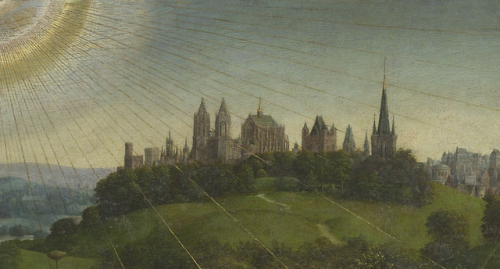





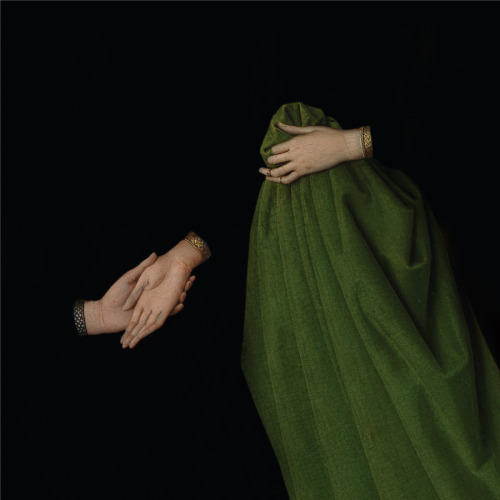
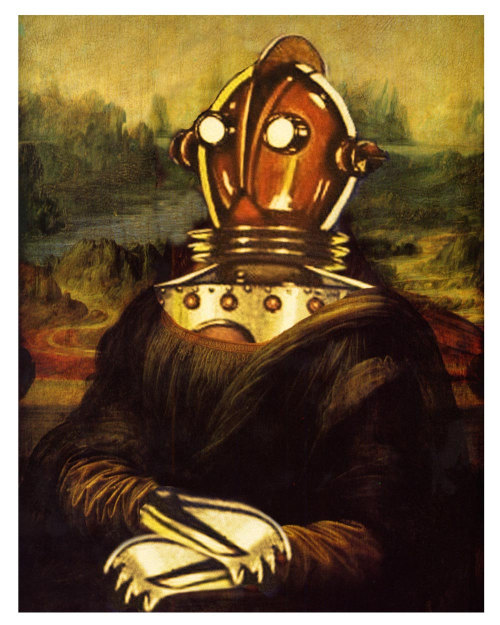

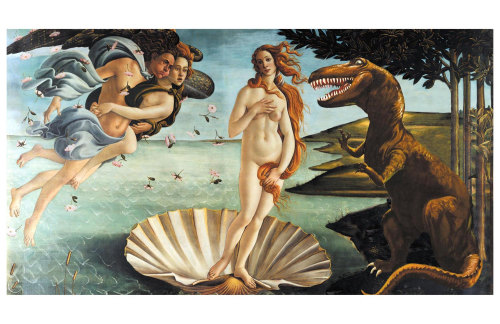
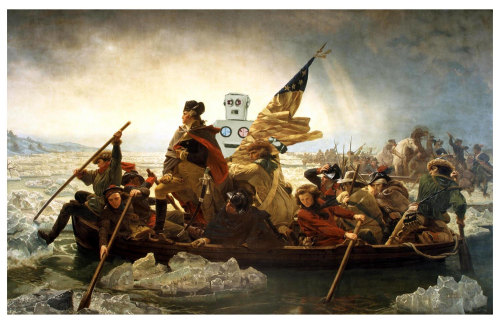
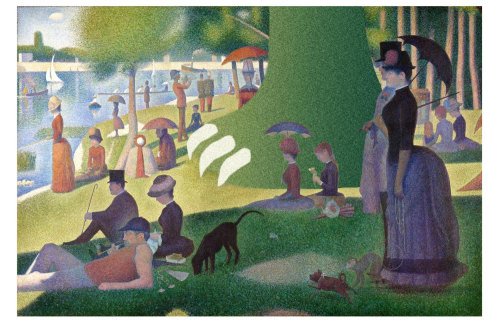
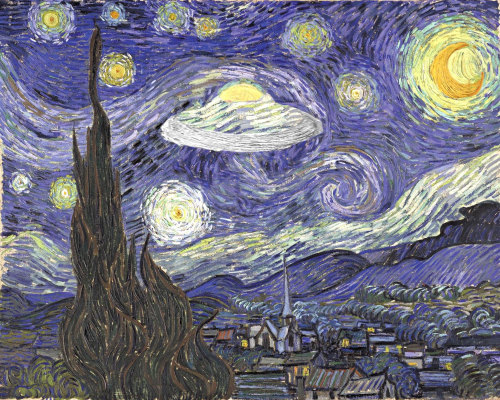

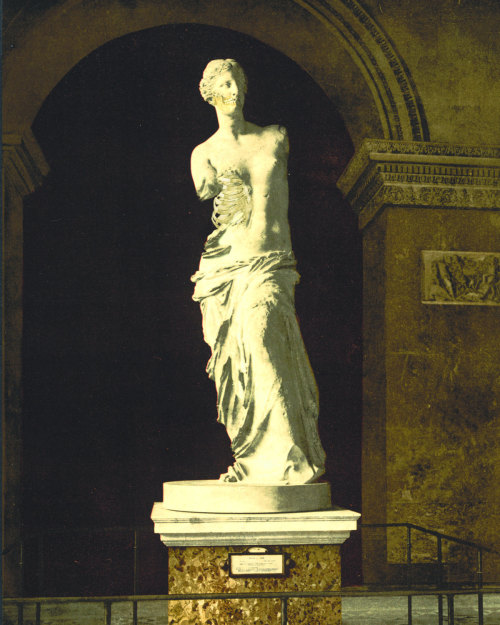
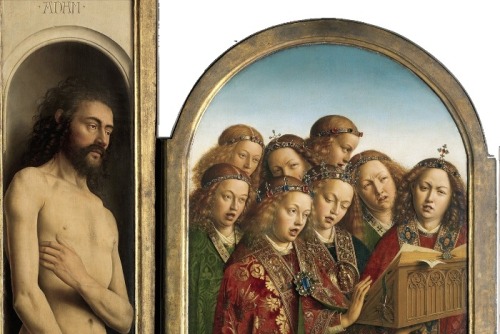
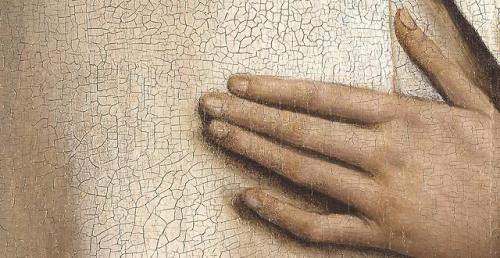

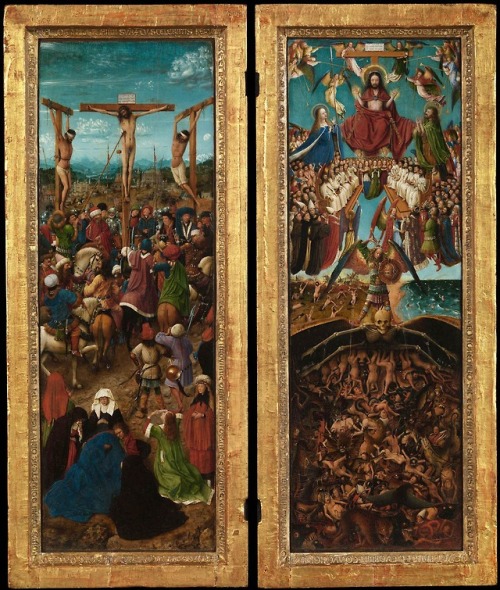
![Jan van Eyck, Portrait of a Man [detail] Jan van Eyck, Portrait of a Man [detail]](https://64.media.tumblr.com/54b0c04f61cc4c7a32aff7f68bafbe17/tumblr_nkkl1dz4Ha1qzbcgoo1_500.jpg)
